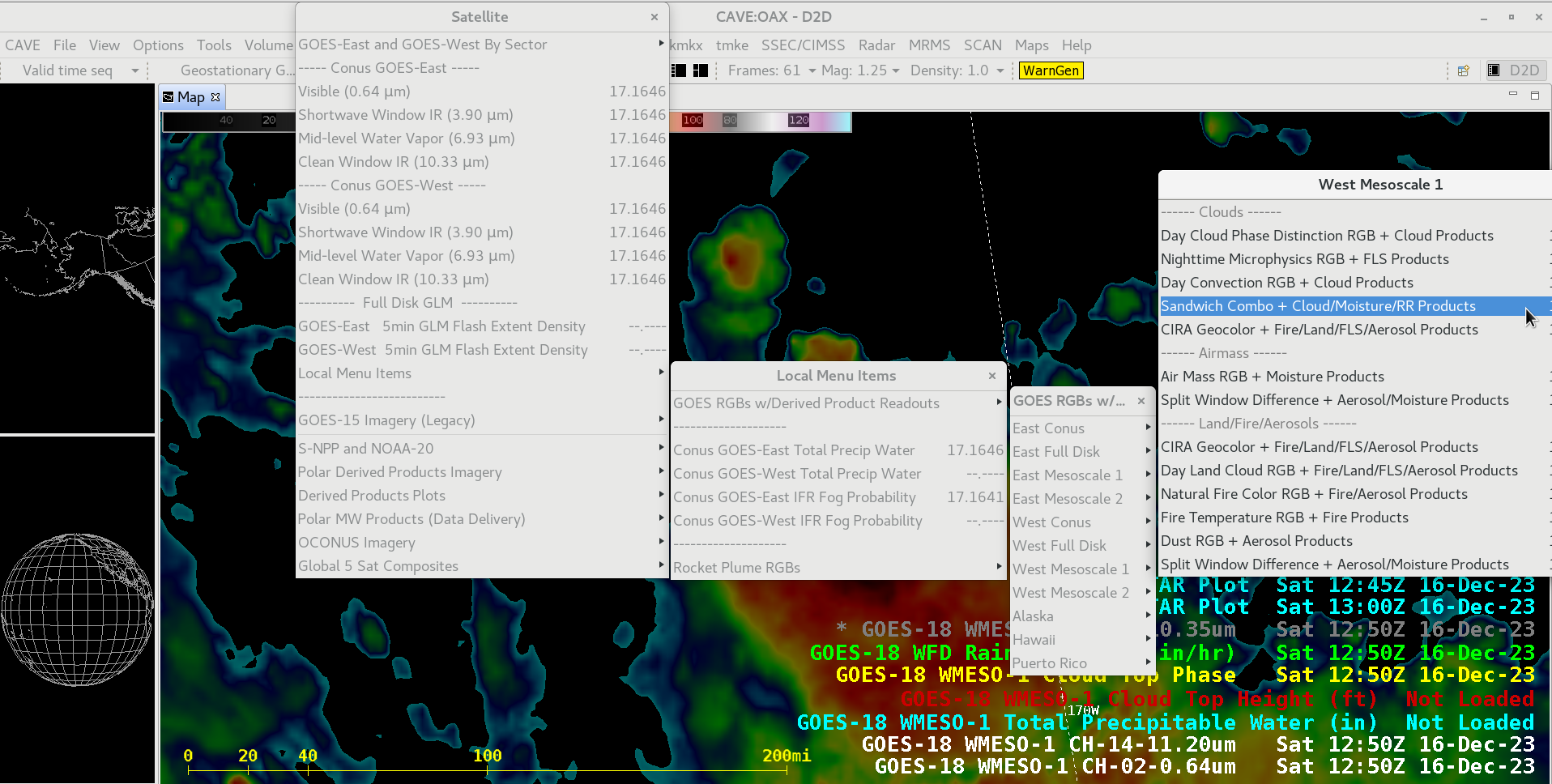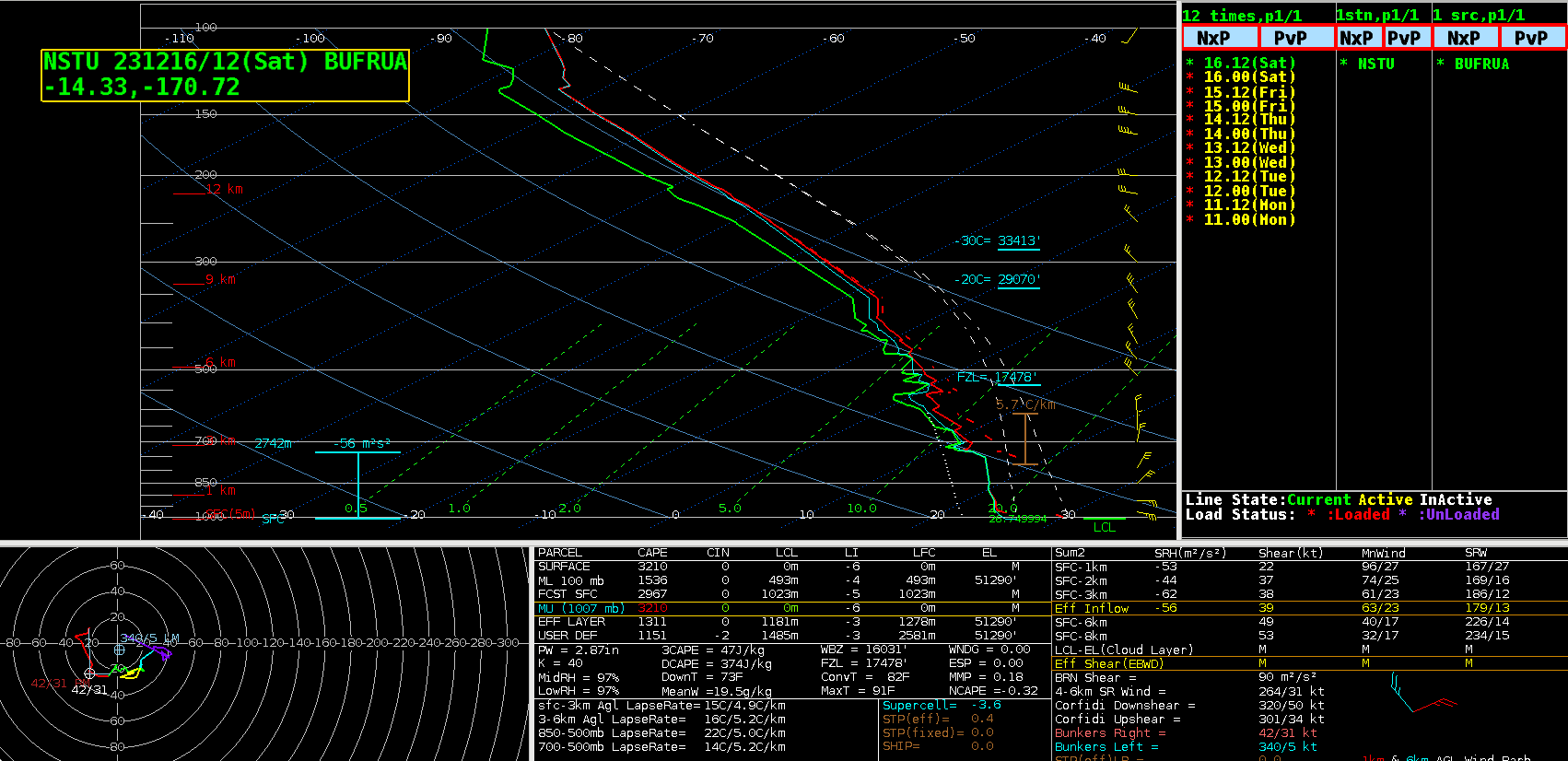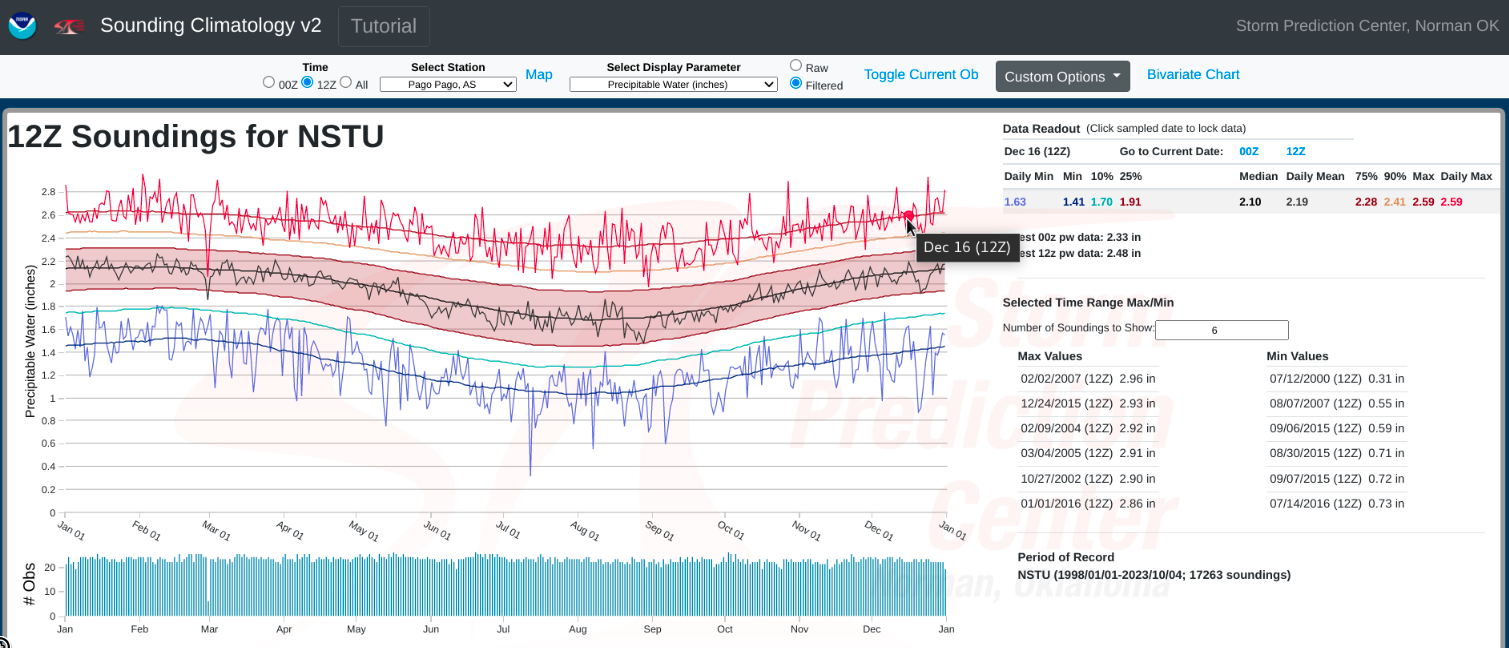1-minute GOES-18 imagery to monitor ongoing heavy rainfall in American Samoa
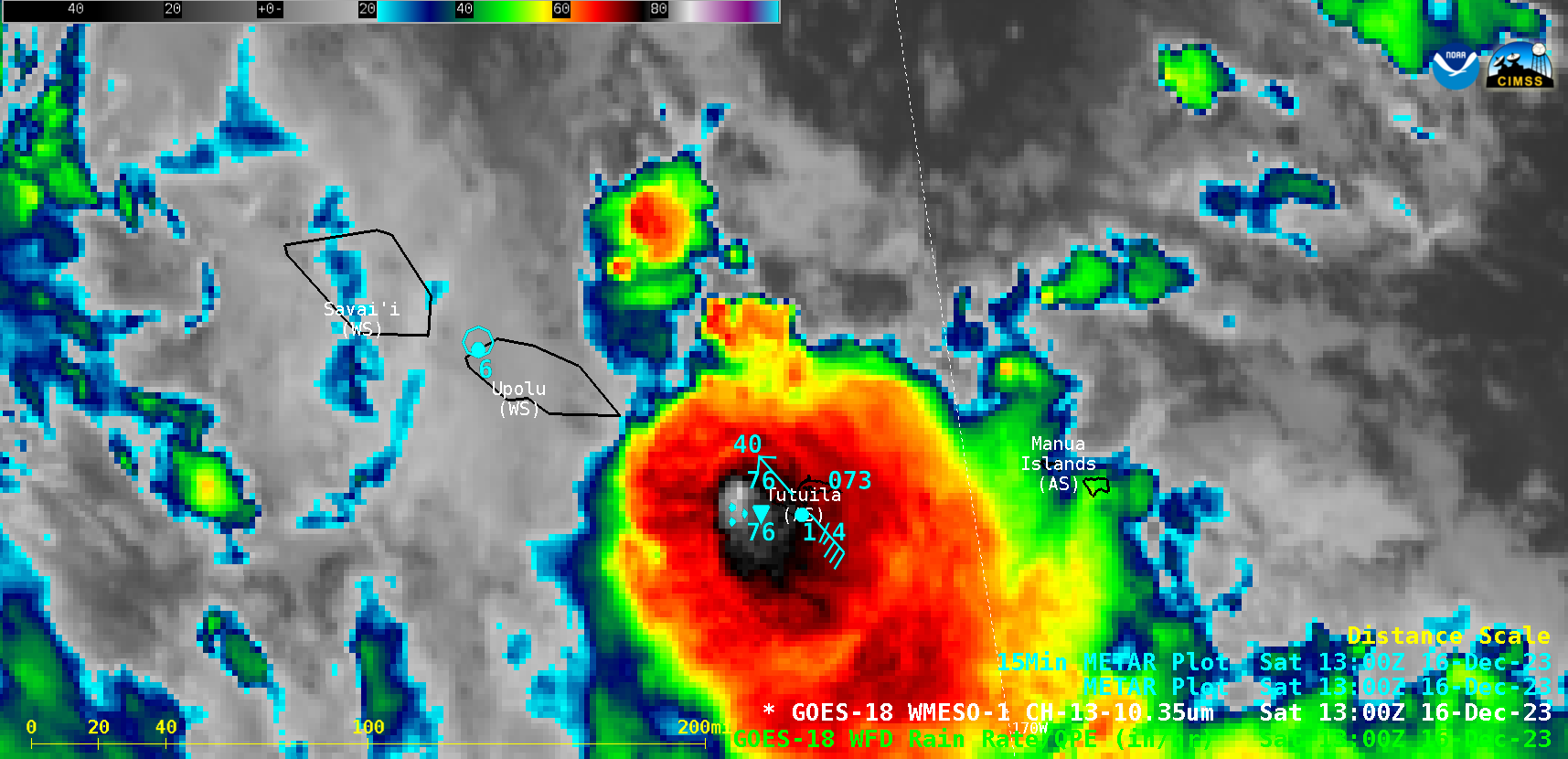
1-minute GOES-18 Clean Infrared Window (10.3 µm) images, from 1000 UTC to 1600 UTC on 16 December [click to play animated GIF | MP4]
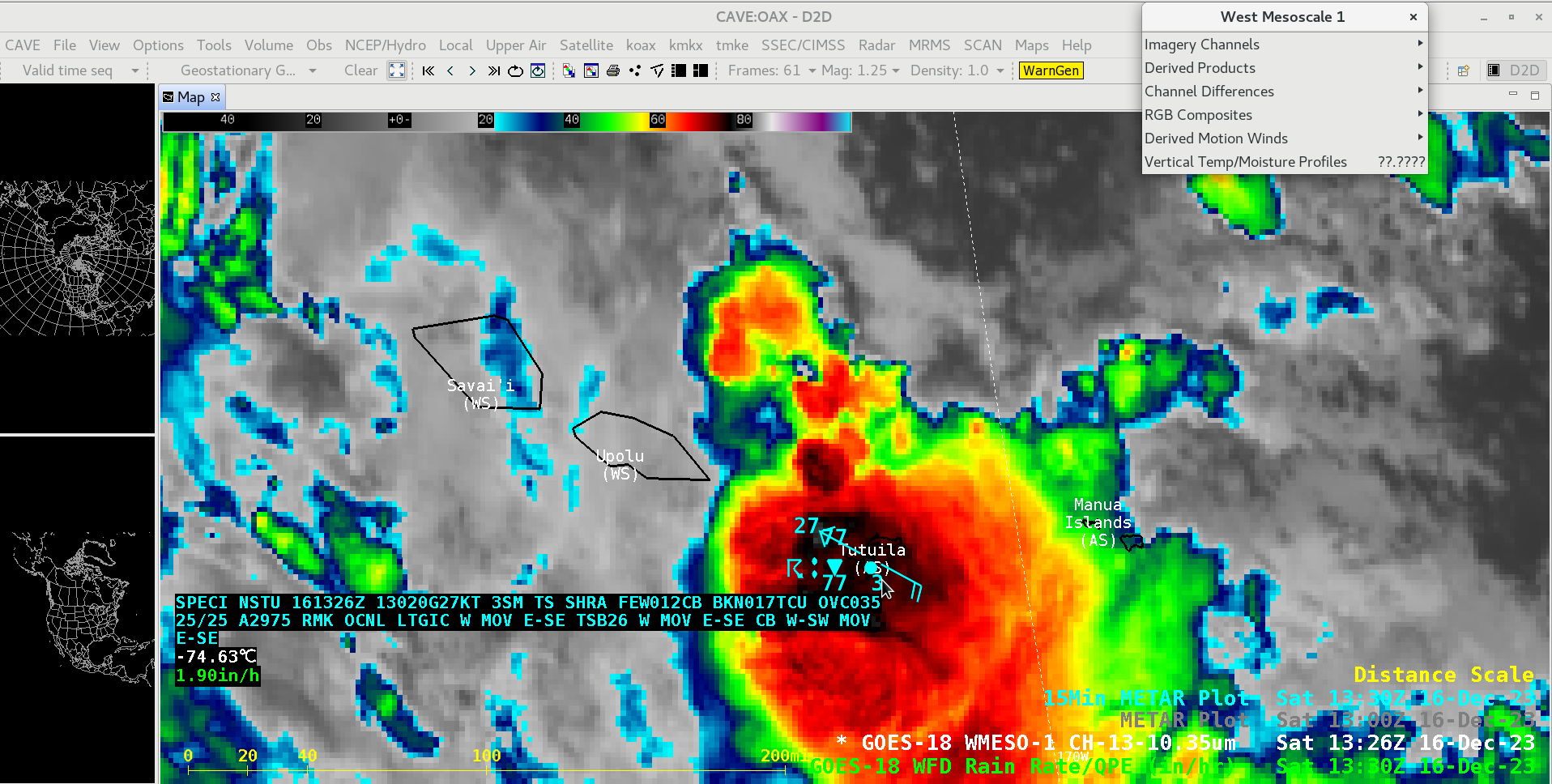
GOES-18 Clean Infrared Window (10.3 µm) image at 1326 UTC on 16 December, with a cursor sample of the corresponding NSTU METAR [click to enlarge]
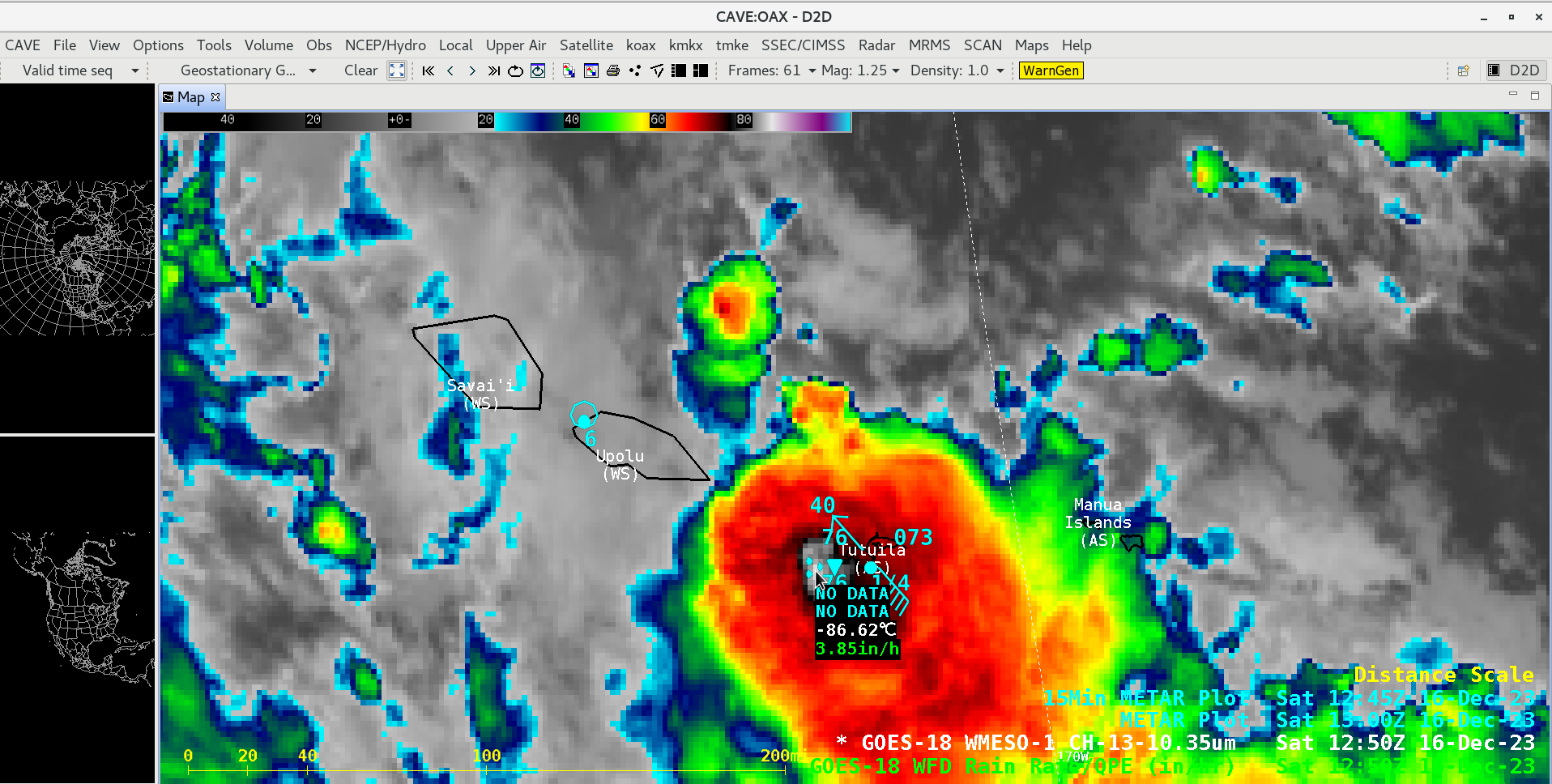
GOES-18 Clean Infrared Window (10.3 µm) image at 1250 UTC on 16 December, with a cursor sample of 10.3 µm brightness temperature and Rain Rate derived product just west of Tutuila [click to enlarge]
It bears mention that the Total Precipitable Water value derived from NSTU rawinsonde data at 1200 UTC on 16 December was 2.87 inches (above) — which was a record maximum value for that date/time, according to this SPC site (below). MIMIC TPW images covering the 4-day period from 13-16 December (below) showed the SPCZ stream of moisture as it edged southwestward to spend more time streaming across American Samoa.
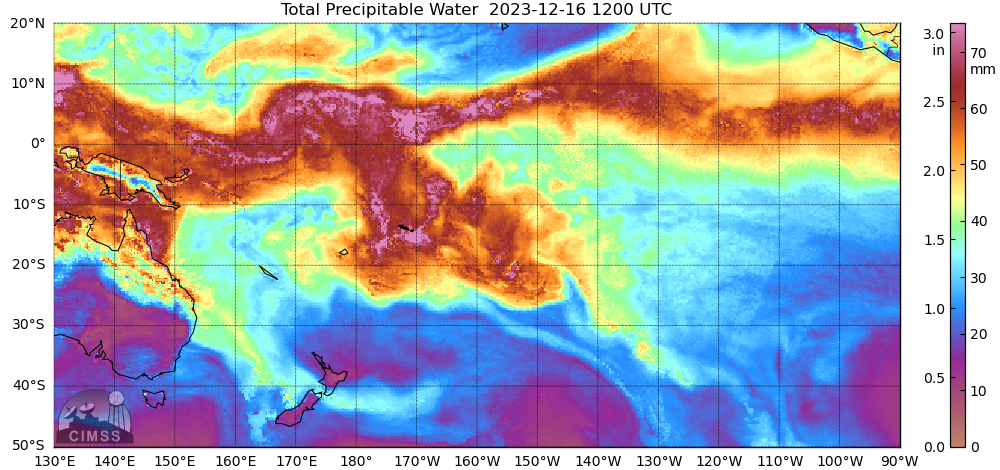
MIMIC TPW images, from 0000 UTC on 13 December to 2300 UTC on 16 December [click to play animated GIF | MP4]


